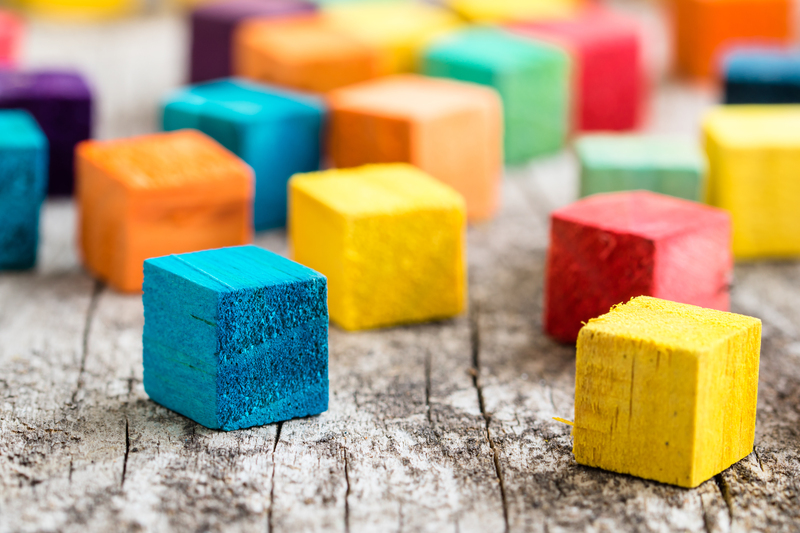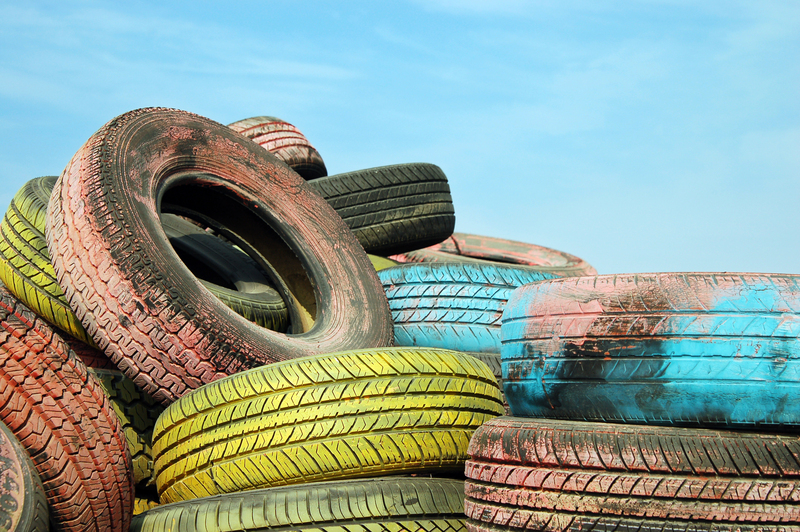Crafting with a Conscience: Upcycle Your Way to a Greener Home
Welcome to the world of eco-friendly crafting where creativity intertwines with sustainability! If you're searching for ways to turn your living space into a hub of environmental responsibility, upcycling is the answer. Instead of throwing things away, why not breathe new life into them? In this comprehensive guide, we delve into the art and science of crafting with a conscience, share innovative upcycling ideas, and offer inspiration to help you transform your home while treading lightly on the planet.
What Does It Mean to Craft with a Conscience?
Crafting with a conscience is all about making intentional, sustainable choices in your creative projects. Rather than using new or disposable materials, you focus on upcycling--the process of repurposing items that would otherwise end up in the landfill. This movement isn't just good for the environment; it also adds character and uniqueness to your home decor.
The Core Principles of Eco-Conscious Crafting
- Reducing Waste: Turning would-be trash into treasure.
- Resourcefulness: Rethinking and reusing household items.
- Intentional Design: Creating timeless, useful, and beautiful pieces.
- Environmental Stewardship: Making choices that minimize your ecological footprint.

Why Upcycling Matters for a Greener Home
The global waste crisis is intensifying, with landfills overflowing and natural resources diminishing. By upcycling, you play a vital part in this green revolution:
- You help reduce landfill waste.
- You lower demand for new products, saving energy and materials.
- You shrink your carbon footprint.
- You foster a culture of creativity and sustainability within your home and community.
Adopting upcycling crafts as a household habit is a joyful, hands-on approach to sustainable living. Before long, you'll find yourself inspired to see "waste" through new eyes.
Upcycle and Transform: Innovative Ideas for Every Room
1. The Living Room
- Old Sweaters to Stylish Pillow Covers: Don't toss that worn out knitwear! Cut and sew it into cozy, chic pillowcases.
- Bookcase from Repurposed Crates: Stack and paint wooden crates for a rustic, modular bookshelf that's both functional and eye-catching.
- Magazine Wall Art: Roll colorful magazine pages into tight coils, then glue together into playful wall sculptures.
2. The Kitchen
- Glass Jar Herb Garden: Clean out old food jars and use them as planters for your favorite herbs. Mount them on a piece of reclaimed wood for a vertical garden.
- Utensil Holder from Tin Cans: Decorate empty cans with paint or fabric and use them to organize cutlery or as flower vases.
- Wine Cork Bulletin Board: Glue wine corks into a frame for a rustic-chic memo or recipe board.
3. Bedroom Bliss
- Jewelry Organizer from Rake Heads: An old metal rake head can be mounted on your wall to cleverly hang necklaces and bracelets.
- T-shirt Quilt: Turn sentimental tees into a patchwork blanket--it's a cozy way to preserve memories and reduce textile waste.
- Drawer Pulls from Vintage Finds: Swapping generic drawer hardware with knobs from old doors or odd objects gives furniture a unique spin.
4. Playroom Creativity
- Cardboard Playhouses: Give large appliance boxes a second life as a blank canvas for your children's playhouse dreams.
- Bottle Cap Magnets: Let kids showcase their creativity by decorating bottle caps, then affix magnets and use them on a chalkboard or fridge.
- DIY Chalkboard from Old Frames: Paint the glass of a used frame with chalkboard paint and you've got an instant artistic surface.
Upcycling: Tips for Crafting with a Conscience
Getting Started with Upcycle Crafts
Many aspiring eco-crafters wonder how they can begin using upcycled materials for their creative projects at home. Here are some actionable tips:
- Assess Your Waste: Before throwing anything out, pause and ask: Can this be repurposed? Look for glass, tin, fabric, wood, and plastics.
- Start Small: Begin with easy projects like repurposing jars as storage containers or transforming bottles into vases.
- Stock a Crafting Corner: Create a small storage area for potential upcycling materials so you're ready when inspiration strikes.
- Seek Inspiration: Browse online platforms like Pinterest or join local upcycling workshops. Social media is brimming with creative ideas!
- Collaborate: Get friends, family, or community members involved. Host a crafting swap or group upcycling event.
Benefits of Upcycling for Your Home and the Planet
Environmental Advantages
- Waste Reduction: Upcycling diverts sizable amounts of waste from landfills.
- Energy Conservation: Creating new products often requires more energy than repurposing old ones.
- Pollution Control: Less manufacturing means fewer emissions and reduced water and soil pollution.
Personal and Community Benefits
- Creative Expression: Each upcycled piece tells a story and brings out your personal style.
- Cost Savings: Make decorative and functional items without breaking the bank.
- Skill Building: Upcycling projects help you develop handy DIY skills.
- Community Engagement: Upcycling can be a collaborative, bonding experience for families, schools, or neighborhoods.
How to Make Upcycling a Habit in Your Home
Step-by-Step Guide to Sustainable Crafting
- Educate Yourself: Learn about materials that are easiest and safest to upcycle. Avoid hazardous or toxic items.
- Set Goals: Try to replace store-bought home decor with handmade, upcycled versions when possible.
- Get the Right Tools: Basic crafting supplies--glue, paints, pliers, and sewing kits--will help you transform waste into treasures.
- Document Your Journey: Take before-and-after photos and share your creations online to inspire others.
- Celebrate Success: Invite friends over to admire your green home, or swap upcycled gifts during holidays.
Choosing the Right Materials for Upcycling
Not all waste is suitable for crafting. Here's what to look for:
- Wood: Furniture remnants, pallets, or crates make excellent statement pieces.
- Glass: Bottles and jars are versatile for organizers, lighting, or vases.
- Textiles: Old jeans, T-shirts, and curtains can be reborn as bags, rugs, or bedding.
- Metal: Cans and kitchen tools can be reimagined as planters or wall art.
- Paper: Magazines, book pages, and cardboard boxes are prime materials for projects large and small.
Sustainable Crafting & Upcycling: Safety Tips
- Clean Thoroughly: Sanitize jars, cans, and fabric before starting your project.
- Ventilate: Use paints and adhesives in well-ventilated areas.
- Wear Gloves: Protect your hands, especially when working with sharp objects or power tools.
- Child Safety: Supervise children and provide age-appropriate tasks when involving the whole family.
Inspiring Examples of Upcycled Projects
Here are a few more creative ideas to fuel your eco-friendly crafting dreams:
- Mason Jar Lanterns: Add a touch of whimsy to gardens or walkways using mason jars, wire, and LED candles.
- Shoe Organizer Planters: Hang an unused fabric shoe organizer on a sunny fence and fill each pouch with soil and seedlings.
- Record Bowl: Heat and mold a scratched vinyl record into a funky, retro bowl for keys or snacks.
- Ladder Bookshelf: Repurpose an old wooden ladder with shelving boards for an industrial chic bookcase.
Teaching Kids to Embrace Upcycling and Eco-Conscious Crafting
One of the most impactful ways to ensure a sustainable future is by involving children in upcycled craft projects. Teaching young ones to value resources and think creatively establishes lifelong habits of environmental stewardship.
- Start with simple crafts, like bottle cap magnets or cardboard sculptures.
- Encourage them to invent their own projects from household "junk."
- Have discussions about the environmental impact of waste.
By making these activities fun and engaging, you pass on the message that crafting with a conscience is both cool and crucial.

Where to Find Upcycling Materials
Don't have a stash of potential crafting goodies? Try these sources:
- Local thrift stores: Hunt for textiles, frames, tools, and unusual objects to repurpose.
- Community garage sales: Get affordable raw materials for your next upcycling adventure.
- Freecycle and Buy Nothing groups: Receive unwanted items from neighbors for free.
- Construction salvage yards: Score wood, glass, fixtures, and more.
- Your own home: Closet cleanouts, attic treasures, and even broken household items can all be upcycled.
Conclusion: Upcycle Your Way to a Greener Home and Brighter Future
Crafting with a conscience is more than a trend--it's a mindset that celebrates creativity, saves money, reduces waste, and helps heal the planet. By adopting upcycling crafts and intentional design in your home, you set an example of conscious living for friends, family, and neighbors. Every pillowcase made from an old sweater, every clever planter, every child's art project from reclaimed cardboard is one less item in the landfill and one more step toward a greener home.
Start small, be bold, and remember: When you upcycle, you're not just making new things. You're making a difference.
Happy upcycling--your home (and the Earth) will thank you!
